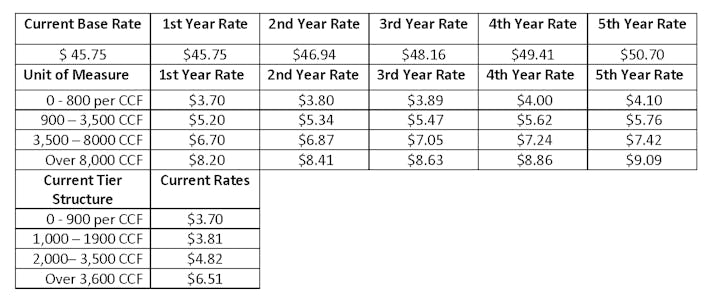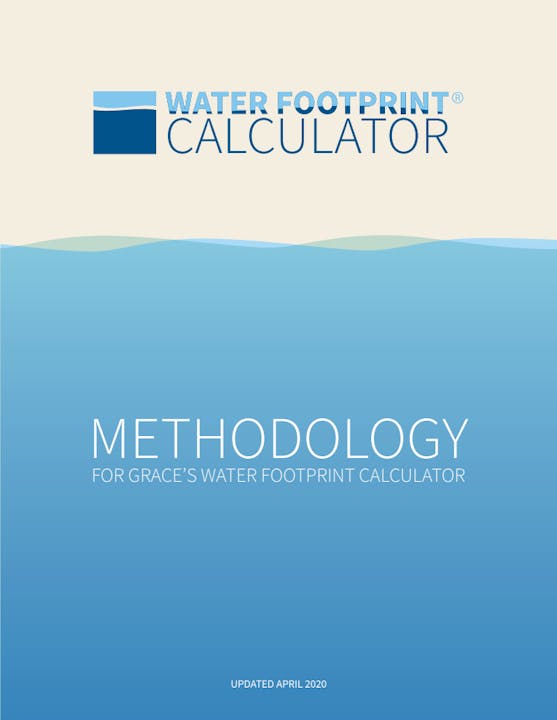Water Rate Estimator Tool
Information on the Estimator Tool
The calculator does not separate the two surcharges that you normally see on your monthly invoices. The surcharges are $8 and CIRF $17 = $25. The Residential Base Rate = $20.75. $25.00 + $20.75 = $45.75 Minimum monthly charge for active accounts. Your emailed and paper mailed invoices will continue to itemize these charges as seen in the example invoice below.
The proposed water rates do not affect customers who use less than 900 CCF or Hundred Cubic Feet per month.
Below is an invoice that AVHCWD sends to our customers. If you are having difficulties receiving your blue postcard promptly, ask our office to begin emailing your monthly water statements. You will receive an email when we post invoices, usually on the 1st or 2nd of each month.
The example below shows a customer who used 900 cubic feet for the month of January 2024. Enter 900 in the water calculator to see the invoice amount with the approved water rates that will take effect beginning March 1, 2024.

The table below displays the increase of the proposed water rates for each of the five years. During the first year of the proposed water rates, a customer that uses 1900 CCF will see an increase of 13.15%. This will be the highest percentage increase of the proposed water rates over the course of the five years.
Apple Valley Heights County Water Distirct Rate Study Report_final.pdf| Current Water Use in Cubic Feet | year 1 | year 2 | year 3 | year 4 | year 5 |
|---|---|---|---|---|---|
| 900 | 1.50 | 2.13 | 2.07 | 2.28 | 2.23 |
| 1900 | 15.40 | 3.53 | 3.37 | 3.78 | 3.63 |
| 3500 | 21.48 | 5.77 | 5.45 | 6.18 | 5.87 |
| 8000 | 16.53 | 5.77 | 21.20 | 14.73 | 13.97 |
| Percentage Rate Increase | |||||
| 900 | 1.9% | 2.64% | 2.5% | 2.69% | 2.56% |
| 1900 | 13.15% | 2.66% | 2.48% | 2.71% | 2.53% |
| 3500 | 11.06% | 2.67% | 2.46% | 2.72% | 2.52% |
| 8000 | 3.30% | 1.12% | 4.05% | 2.71% | 2.50% |
Ever Increasing Expenses
Apple Valley Heights County Water District only has a free production allowance of 63 acre-feet of water per year (Oct-Sept), with further rampdowns already set for this water year at 50% of our system's original base production allowance of 125 acre-feet. For the water year 2022-23, AVHCWD produced 103 acre-feet of water, resulting in a replacement obligation of 34 acre-feet of water. For the 2022-23 water year the cost to purchase the 34 acre-feet of water from MWA is $658.00. That's a whopping $22,372! AVHCWD emphasizes the need for customers to do their part not only for drought, conservation, and environmental purposes but also due to these ever-increasing expenses.
AVHCWD provides on average water service to 316 residents. To stay within the 63-acre-feet allotment, each customer would need to use an average of 800 cubic feet of water per month; we not only would be doing our part in saving water. but we would save tens of thousands of dollars each year in costs associated with getting that water from deep below the earth through the water mains up to water storage tanks, through more water pipes and meters, and finally into your home. Even small changes in water habits result in savings that add up throughout the year. The less the water pumps run, the lower our electrical bills are, which keeps our expenses to a minimum. Remember that we are all in this together; when our bills increase, your water bill will have to increase. It comes full circle. Water-saving habits add up to large savings at the end of the year. It takes considerable power to run our water wells that pump water from the ground through piping up to the water storage tanks high on the mountainside, then into a network of underground piping, through your water meter, and finally into your home. As a local government special district, it is law that our revenues match our expenses. Water rates can go increase but they can also decrease. Suppose the district finds itself making a profit. In that case, it is required that water rates be restructured to match those lower expenses, meaning lower water rates and less money spent on the water you use.
A Little Back Story on the Adjudication and the Mojave Water Agency
In 1990, the City of Barstow and the Southern California Water Company (plaintiffs) filed an action against the City of Adelanto, the Mojave Water Agency (MWA), and other upstream water producers, claiming that their groundwater production was adversely impacting plaintiffs’ water supply and that they contributed to the entire Mojave River Basin overdraft. The plaintiffs sought an average annual flow of 30,000 acre-feet of water to the Barstow area and a writ of mandate to compel the MWA to import supplemental water from the State Water Project. In 1991, the MWA served over 1,000 persons with an amended cross-complaint that joined substantially all water producers within the Mojave River Basin, except for certain small producers. The cross-complaint requested a declaration that the available native water supply was inadequate to meet producer demands within the Mojave River Basin and asked the court to apportion water rights among the various water producers. The trial court stayed the litigation while a committee, composed of attorneys and engineers representing numerous water producers throughout the Mojave River Basin, met to negotiate settlement terms and to develop a physical solution to the water shortage problem. After negotiating for two years, the committee submitted a draft physical solution to the trial court.
The physical solution’s stated purposes are
- to ensure that downstream producers are not adversely affected by upstream use,
- to raise money to purchase supplemental water for the area, and
- to encourage local water conservation. Regionally, the physical solution requires each subarea within the basin to provide a specific quantity of water to the adjoining downstream subarea.
The solution places no limits on the amount of water a party can withdraw. Instead, each party is allotted a certain quantity of water—a “free production allowance” based on its prior use—which it can use at no cost. When a party uses water in excess of its free production allowance, it is charged a fee to purchase “replacement” water for that subarea. The physical solution also sets a “base annual production” amount for each party, determined by the producer’s maximum annual production for the five-year period from 1986 to 1990. The solution defines a producer’s base annual production right as “the relative right of each producer to the free production allowance within a given subarea, as a percentage of the aggregate of all producers’ base annual production in the subarea.” The higher the base annual production right, the more water a producer can sell under transfer provisions and produce free of a replacement assessment. Significantly, the physical solution did not apportion production rights on the basis of preexisting legal water rights. The drafters of the physical solution believed such apportionment would lead to inequitable water allocation. In fact, the trial court expressly held that the parties were “estopped and barred from asserting special priorities or preferences.” The court further concluded that allocating water based on asserted legal priorities would be “extremely difficult, if not impossible.”
In 1993, pursuant to the Court Judgment, which adjudicated the rights to pump groundwater in the Mojave Basin Area, the Mojave Water Agency (MWA) was appointed Watermaster. Watermaster’s main responsibilities are to monitor and verify water production for approximately 450 parties (1,700 wells), collect required assessments, conduct studies, and prepare an annual report of its findings and activities to the Court. Watermaster also acts as the clearinghouse for recording water transfers, maintains records for all such transfers, and reports changes in ownership of Base Annual Production rights to the Court.
To learn more on the adjudication and the Mojave Basin Area Watermaster click the link below


%20(1).png?ixlib=rb-1.1.0&or=0&w=720&h=720&fit=max&auto=format%2Ccompress&s=8539533a9d833075ce62add289634d47)



